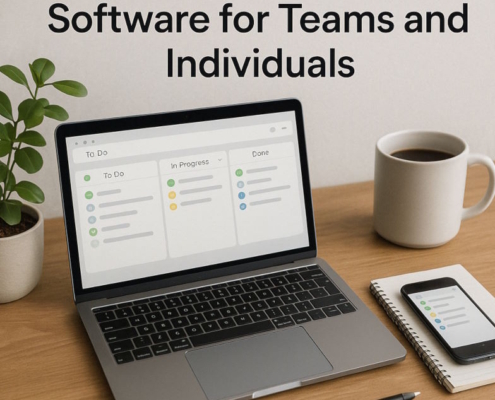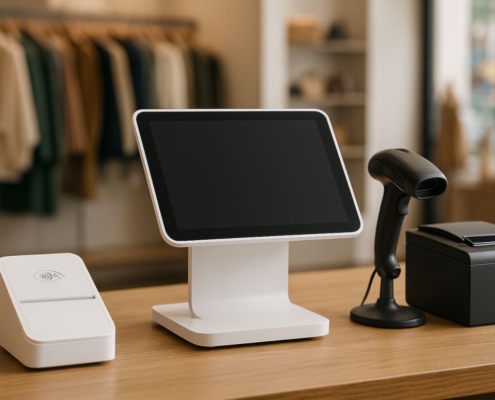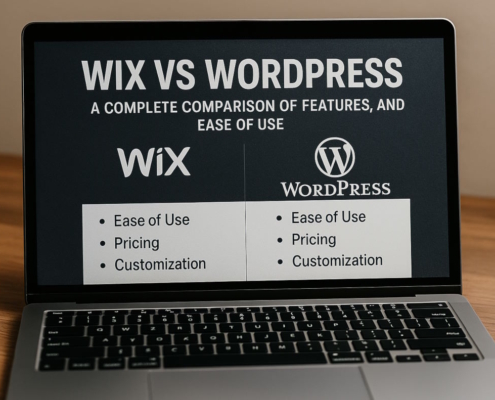How much money can you get for SSI?
Many people cannot work or afford to live independently due to disabilities, blindness, or old age. Supplemental Security Income (SSI) is a program that can help people who are unable to work, who do not have any other means of support, and who have very little resources.
For those in such a predicament, the federal government established the Supplemental Security Income program. Supplemental security income (SSI) recipients get a certain amount each month to help cover their basic needs. The Social Security Administration oversees the Supplemental Security Income program. As part of the Supplemental Security Income (SSI) program, residents of California also get a smaller amount from the State Supplemental Program (SSP) each month. Maximum SSI benefits (including the SSP) for the majority of people are $1,182.94 per person and $2,022.83 per couple. If you are blind, the most you can get is $1,267.32 for one person and $2,248.35 for a couple.
People in California who are eligible for Supplemental Security Income also automatically get Medi-Cal payments.
The names of three disability benefits—SSI, SSDI, and SDI—are extremely similar. A bit confusing, yes? Let’s go over each:
- Some disabled people who don’t have a lot of money or means can get cash from the Supplemental Security Income (SSI) program. A history of work is not a requirement for Supplemental Security Income.
- The government program known as Social Security Disability Insurance (SSDI) provides a monetary benefit to those who have long-term disabilities and meet the eligibility requirements, such as having worked in the past or having a family member who did.
- Californians who were working when they became disabled are eligible to receive a monetary benefit from the State Disability Insurance (SDI) program for a period of one year or less.
It is possible that you can meet the requirements of multiple programs simultaneously. When you become handicapped, for instance, you may first be eligible for SDI and then switch to SSDI. If you are receiving SSDI and your finances are poor, you might also be eligible for SSI. Find out what benefits you now receive and what more you could be eligible for by applying.
Who Can Apply for SSI?
Benefits from Supplemental Security Income (SSI) are available to three categories of individuals:
- Disabled people, those with low incomes and few resources, and those who are 18–65 years old may qualify. Those in the age bracket of 18 to 65 are the primary subject of this article.
- People with low incomes and few resources, aged 65 and up.
Recipients are disabled children and youths under the age of eighteen. Take note that disabilities are defined differently for those under the age of 18.
Anyone can get Supplemental Security Income benefits; job history is not a requirement.
For SSI payments, you must meet the following requirements if you are between the ages of 18 and 65:
- Fulfill specific residency and citizenship criteria;
- Satisfy financial and resource constraints; and
- Are unable to work due to a disability.
Health Disabilities for SSI
You need medical proof that your condition makes it impossible for you to work in order to get Supplemental Security Income (SSI) payments. The definition of a disability as set out by Social Security is quite precise. All of Social Security’s programs rely on the same definition of disability.
Medical Terminology for Disability
- You need to be able to prove your serious mental or physical handicap using official medical documents. In the event that no reports are accessible, Social Security will arrange for medical confirmation through a doctor’s referral.
- Your illness must have persisted for a year or more, or be fatal if left untreated.
- Social Security applies specific criteria to determine blindness for those with visual impairments.
Not Able to Work
Additionally, you must be unable to work due to your handicap. When it comes to Social Security, there is a set definition of work. A certain amount of labor or income is defined as Substantial Gainful Activity (SGA). In 2024, according to Social Security, your earnings are considered Substantial Gainful Activity if they exceed $1,550 per month (or $2,590 if you’re blind).
The receipt of a wage subsidy, impairment-related work expenses (IRWEs), or blind work expenses (BWEs) may allow you to lower your taxable monthly income. Aside from looking at your salary, Social Security takes other factors into account when determining if your job activity qualifies as SGA. For instance, to determine whether your work qualifies as SGA, Social Security takes into account factors including your hours worked and responsibilities and applies up to three separate tests. You can get more details by going to the website of the Social Security Administration.
In order to determine whether your impairment does indeed render you unable to work, Social Security will ask you a number of questions when reviewing your application.
Can You Still Hold Down a Job Despite Your Disability?
The Social Security Administration refers to these questions as the Functional Assessment:
No one can claim disability or SSI payments if their income is more than the SGA level because that means they are able to work. Otherwise…
You are immediately considered disabled if your condition is severe enough and appears on the Listing of Impairments. If not…
Even if you don’t have a job right now, Social Security checks to see if you could do your old job. So long as that’s the case, you will not be considered disabled. If not…
Taking into account your age, medical history, and other factors, Social Security determines if you are capable of performing any other type of employment. So long as that’s the case, you will not be considered disabled. If not…
You have a disability.
Let’s look at an example. Consider Mae, who suffers from a potentially fatal lung illness. She maintains her employment and earns $1,790 per month from her part-time job at a bakery. Her income is more than the current SGA level of $1,550, according to Social Security. As per Social Security, Mae does not qualify as disabled due to her wages.
How about another example? Fiona’s fall caused her to damage her spine. Her injuries included a broken vertebra and damage to nerve roots. Right now, she isn’t working. Because her disease is both severe and on the Listing of Impairments, Social Security has determined that she is disabled. According to Social Security, Fiona is thus considered disabled and could be eligible for monthly compensation.
You must be unable to earn more than the SGA level in any employment, not only your previous one, due to your impairment. The factors taken into account by Social Security include your age, level of education, prior work experience, and transferable talents. (The regulations are more lenient for those above the age of 55.)
Lewis, for instance, was a fisherman until he hurt his back playing flag football. Since he is currently unemployed, his take-home pay is lower than the SGA threshold. Although the back injury has been there for a long time and is rather severe, it is not considered a disability according to the Listing of Impairments.
Social Security determines that Lewis’ background makes him qualified for a desk job as a dock dispatcher, even though he is physically unable of performing the heavy lifting required by his previous position. Lewis is not considered disabled for Social Security purposes because he is capable of working.
Resource requirements for SSI
It is required that you disclose all assets, including cash and real estate, when applying for Supplemental Security Income benefits. Prior to applying for help, Social Security wants you to sell any assets or money that you could use to pay your bills.
Your resources consist of liquid assets and any other assets that can be easily converted into cash. When calculating SSI’s resource limit, certain resources are not considered. The following resources are not included:
- The house you currently reside in
- A single vehicle
All resources that aren’t excluded are countable.
To be eligible for Supplemental Security Income (SSI) benefits, your countable resources must be less than $2,000 (or $3,000 for a couple).
If your disability started before you turned 26, though, there is a way to register an ABLE account. With this account, you can save up to $100,000 over time and SSI won’t include it.
Take Sam, for instance. He has $5,000 stashed away in a regular savings account—not an ABLE account—just in case. This money still counts as a resource, even though he has no intention of spending it and even doesn’t want to. The Supplemental Security Income program does not cover Sam.
SSI Criteria for Citizenship
Either U.S. citizenship or admissible foreign national status is required to receive Supplemental Security Income (SSI) payments. The following groups of individuals are considered qualified aliens:
- Lawfully admitted for permanent residence (LAPR)
- Those seeking asylum who are eligible for U.S. admission under INA Section 207
- Asylumees who qualify under INA Section 208
To qualify for Supplemental Security Income (SSI) benefits, qualified foreigners must additionally fulfill additional requirements. Some immigrant and refugee groups have a seven-year window after their date of admission into the United States during which they can apply for Supplemental Security Income benefits. They should become citizens of the United States before that period ends if they anticipate continuing to receive Supplemental Security Income benefits.
Application for SSI
If you are eligible, you can submit an application for SSI:
Applying online (which begins the process instantly)
To schedule an appointment to apply for social security, you can phone 1-800-772-1213 or 1-800-325-0778 (TTY)
By visiting the Social Security office in your area.
Your initial application can take up to four months to complete. Get in touch with the county social services office immediately if you’re in a dire situation. They can help you apply for health insurance and CalFresh (previously known as food stamps) if you qualify. They can also provide housing support and emergency monetary assistance, depending on your situation and needs.
You can apply for CalWORKS, Medi-Cal, and other benefits while you wait for a response from Social Security. Either visit your county’s social services office or apply online at BenefitsCal.
Questions About the Application
When you submit an application for Supplemental Security Income, Social Security will require the following information:
- Name, DOB, and other essential details
Bring:
- State IDs, driver’s licenses, passports, and other forms of official identification
- Document proving birth
- Documentation showing your U.S. citizenship, such as a passport or naturalization papers, in the event that you were born outside of the United States. You need to be a qualified alien who fulfills specific requirements if you aren’t already a citizen of the United States. To get additional information, get in touch with your local Social Security office.
- Social Security number
- Evidence of your health problem
Bring:
- Details of all healthcare providers that have treated you, such as names, full addresses, and phone numbers of hospitals, clinics, and specialists
- Medical history, prescriptions, and test findings
- Records detailing the many ways in which your health condition impacts your day-to-day activities
Just in case:
- Authorize Social Security to obtain medical records by signing the necessary paperwork.
- How does your disability impact your daily life?
- Permit Social Security to obtain information on the impact of your disability on you from your employer, friends, and family.
- Proof of income
Bring:
- A summary of your work experience over the last fifteen years
- Latest W-2 forms or tax records
- Details regarding any extra benefits you receive
- If you are younger than 22 years old, your academic records
Keep in mind:
- Minimum monthly earnings required to be eligible for Supplemental Security Income (SSI) are $1,550 (or $2,590 for blind individuals) or less.
Bring:
Just in case:
- Respond to requests and provide documentation regarding your assets, including any property, bank accounts, stocks, bonds, savings and retirement plans, etc.
Keep in mind:
- As a single person, you can only have $2,000 in SSI assets; as a couple, you can have $3,000.
- Your residence does not count.
- Your first car doesn’t count, especially if you only use it to go to doctor’s appointments.
- In addition, Social Security will request that you authorize direct deposit of your check into your bank account.
Don’t put off applying for Social Security because you need to gather the papers you need. They can help you. If you are an adult seeking disability benefits from Social Security, you can access an online Adult Disability Starter Kit that will walk you through the steps of the application process and answer any questions you may have.
Get on the SSI application process as soon as possible if you think you might need it. Social Security will pay benefits back to the date of your application, even though the processing time may be lengthy.
SSI Decision
In most cases, Social Security takes three to six months to review an application for Supplemental Security Income (SSI) benefits after the applicant has submitted all required paperwork. They will notify you by letter of approval or rejection after they have made a decision.
Typically, an award letter will state:
- The total amount of your monthly SSI benefits (including SSP)
- When the money will be sent
- How much money you’ll get in back benefits, calculated from the date you applied for Supplemental Security Income (SSI).
- When Social Security will assess your medical status again — usually 3 to 7 years after you begin receiving benefits.
- Monthly SSI payments are direct deposited into your bank account following the receipt of your award letter. Direct Express debit cards allow SSI recipients who do not have bank accounts to still make purchases.
It might be challenging to read award letters. Call 1-800-772-1213 or 1-800-325-0778 (TTY) to speak with a Social Security representative about your new benefit. You can find further details on the Social Security website.
SSI Refusal and Appeal
A denial letter is sent to some applicants informing them that their claim for Supplemental Security Income payments has been denied.
The following are the most common SSI denial reasons:
- The leading cause of claim denials is medical-related. Unfortunately, there are cases where Social Security either lacks sufficient medical evidence to support your claim or does not consider your medical condition severe enough to prevent you from working.
- Your resources exceed the Social Security limit of $2,000 ($3,000 for a couple), according to the program.
- SGA: According to Social Security, your income is more than the $1,550 threshold for Substantial Gainful Activity.
Keep in mind that before you can get SSI payments, Social Security has to see if you can get SSDI. An SSDI denial letter is not the same as an SSI benefit denial notice. Review the rejection letter’s letterhead. Supplemental Security Income will be printed at the top of a real SSI denial letter.
You are under no obligation to comply with Social Security’s ruling. You can submit an appeal if you think the decision is wrong or unfair.
Appeal for SSI
You will have sixty days from the date of the denial letter to submit an appeal. Get things done fast. If you submit an appeal within ten days, Social Security will let you keep receiving your SSI benefits at the same level until they decide on your appeal. You might not have the option to appeal at all if the 60-day deadline passes without notice.
Note: Social Security says you should get a letter five days after they send it.
There is a difference between appealing and refiling. If you disagree with the decision that refused your application for SSI benefits, you should file an appeal instead of resubmitting the forms. If your appeal is successful, you will receive your benefits back to the date of your original application. You will forfeit any right to any benefits you may have received in the past if you reapply for Social Security; the system will begin the process from the beginning.
Get an SSI appeal form by contacting Social Security at 1-800-772-1213 or 1-800-325-0778 (TTY). You have the option to submit your appeal through an online form as well. In the event that your circumstances change after you submit your application online, you must notify Social Security by letter or in person.
During the appeals process, you have the right to be represented by an attorney or other qualified representative who is acquainted with both you and the SSI program. And you can always handle it on your own if you like.
The appeals process is structured with four tiers. You can proceed to the next level if you are unhappy with the outcome at the previous one.
There are four levels:
In a reconsideration, a separate Social Security employee from the original decision-maker reviews your case from beginning. If you would like, you may provide additional details. There is no need to appear before a court because this is a paper appeal. If any new information regarding your case comes to light, you are required to contact Social Security.
You have the option to request a hearing before an Administrative Law Judge in the event that your request for reconsideration is denied. To strengthen your argument, you have the option to bring witnesses. Think about bringing a lawyer or advocate to the hearing to represent you.
If you want to challenge the Administrative Law Judge’s ruling, you can take your case to the Social Security Appeals Council. After reviewing the judge’s ruling, the Council has the option to either uphold it or remand the matter to an Administrative Law Judge for further consideration.
You have the option to sue in federal court in the event that the Appeals Council rejects your case.
You should retain legal representation for any proceeding beyond the reconsideration.
Assistance in Filing an SSI Appeal
- A non-profit organization, Disability Rights California (DRC) provides broad information regarding referrals, legal rights, and self-advocacy resources, and it may also represent certain individuals with disabilities.
- The National Organization of Social Security Claimants Representatives (NOSSCR) connects individuals who believe they have been unjustly denied Social Security benefits with lawyers and paralegals who can represent them.
Social Security considers your ability to meet essential expenses after you’ve proven that your impairment prevents you from working. You might be eligible for a monthly cash payout from SSI to assist with those expenses. Enrollment in Medi-Cal is automatic for all Californians who are eligible for Supplemental Security Income benefits.
Note: The Supplemental Security Income (SSI) benefit in California is actually a mix of cash from the State Supplemental Program (SSP) and the Social Security Federal Benefit Rate (FBR). Every time we refer to SSI in this post, we mean the combined benefits of SSI and SSP. Even though the funds originate from two different sources, you will only get one direct deposit into your bank account or Direct Express Debit Card each month.
How Much SSI Can Pay Out
The point of SSI is to make sure you have enough money to take care of your basic needs. The Supplemental Security Income program uses your living situation to determine how much money you need.
Some of the factors that could affect it are:
- The presence or absence of a kitchen in your dwelling
- What kind of medical center you live in (certified or not certified)
- If you live in a private medical facility, who pays for your treatment
Social Security has a comprehensive database of all possible maximum monthly benefits for various scenarios in California.
Factors Influencing the Maximum Benefit
The maximum Supplemental Security Income (SSI) payout for an individual living alone is $1,182.94 ($1,267.32 for a blind person), as we just noted. If you are part of an eligible couple, if you share housing and food expenses with another person, or if you are a resident of a healthcare facility, jail, or other institutional setting, the limit may vary.
Couples
Your relationship qualifies you as a couple for Social Security benefits if:
- You’re married; and
- You and your spouse have moved in together; and
- You and your partner are qualified to receive SSI benefits.
The Social Security Administration will treat a couple as a married couple for SSI purposes if they live together, behave as if they are married, and portray themselves to the community as a married couple.
Maximum SSI payments for a couple are $2,022.83 (about 170% of the individual maximum of $1,182.94) because Social Security believes that two individuals living together can live more cheaply than two persons living separately. For a blind couple, the upper limit is $2,248.35.
If you are married and living with your spouse, but they are not eligible for Supplemental Security Income payments, Social Security will assume that you are able to meet your basic needs by using some of your spouse’s income. Spousal deeming refers to the procedure for determining the impact of your spouse’s income on your Supplemental Security Income benefits.
Social Security calculates benefits as if you and your spouse were not married or if you did not live in the same household.
Residency at Another Person’s House
One can get up to $1,182.94 ($1,267.32 for the visually impaired) monthly if they are self-sufficient in housing, food, and transportation. Owning or renting your house is irrelevant.
You can still get up to $1,182.94 ($1,267.32 if blind) per month even if you reside with someone else but are responsible for your own housing, food, and transportation.
But Social Security lowers the maximum benefit amounts you can collect if you reside in someone else’s house and they’re paying for your food and housing. This is due to the fact that Social Security views the assistance you are receiving as valuable, which implies that you will require less assistance from SSI. In this case, the maximum SSI compensation is $873.87 ($958.25 for the blind).
Everything that goes into maintaining a home is considered shelter costs, including but not limited to: rent, mortgage, property taxes, heating fuel, electricity, gas, water, sewage service, and trash collection.
Please be aware that this rule does not apply if your spouse is also providing for your basic needs (such as food and housing). What this means is that you are eligible to get a portion of your spouse’s salary.
Example
As an SSI recipient, Roger resides in his uncle’s home. Roger receives three meals a day and pays no rent to his uncle. Roger does not receive the full $1,182.94 monthly SSI payment because he is receiving assistance with both his food and rent from someone else residing in the same property. As a result, his monthly benefit is now only $873.87.
Patients Residing in Healthcare Institutions
It is not common practice to allow full SSI benefits to those residing in nursing homes and hospitals.
- Your Supplemental Security Income (SSI) benefits cannot exceed $62 per month for an individual or $124 per month for a couple if you are residing in a medical facility where Medi-Cal covers over 50% of your healthcare costs.
- You are ineligible for Supplemental Security Income (SSI) if you reside in a public institution and Medi-Cal does not cover more than 50% of your medical expenses.
- If your doctor certifies that your stay will be shorter than 90 days and you can prove that your SSI benefits are necessary to maintain your current living situation, you will be able to keep receiving your benefits.
- You must promptly obtain the doctor’s note and proof regarding your requirement to Social Security if your anticipated stay is shorter than 90 days. For assistance, contact the admissions office of the facility. To prevent the loss of your home or living arrangements, SSI also requires a declaration from you or someone who is knowledgeable about your circumstances stating that you must keep your SSI benefits.
Lack of Housing
For SSI to kick in, a permanent residence isn’t required. Everyone, including those who are homeless, is eligible to receive Supplemental Security Income benefits. For additional details, refer to the Social Security Administration’s Spotlight on Homelessness.
Methods for SSI Income Determination
There are some SSI recipients who supplement their income with other sources. For instance, you may be receiving a salary or other form of income. You are required by SSI regulations to spend a certain percentage of your additional money on necessities. You are only required to pay a certain percentage of your monthly income toward basic necessities if you receive Supplemental Security Income (SSI).
There is a formula to determine how much of your money is countable and how much is uncountable. There is a difference in how SSI handles the two types of income.
Work is the primary source of one’s earned income. Everything you get for the actual mental or physical labor you put in falls under this category, including salaries, tips, bonuses, and professional fees. When determining your Supplemental Security Income (SSI) benefits, Social Security takes into account your gross earned income, which is defined as wages before taxes.
When you file your taxes, you deduct your job expenditures from your earned income. If you’re self-employed, you do the same.
Other forms of income are considered unearned. You receive payment without exerting any effort. Some examples include disability benefits like Social Security Disability Insurance (SSDI), insurance for both short-term and long-term disabilities, benefits for veterans, or workers’ compensation; income from investments or trusts; dividends, profits, or any other form of income that is not directly related to work.
If you have any unearned income, the majority of it will fall into your countable income since Social Security believes that most people’s money should go toward necessities. This may sound convoluted, but here’s the gist of it. Working people’s countable income includes around half of their earnings because Social Security believes that workers spend half of their income on essential expenses.
The Method for Determining Countable Income
Step 1: Income That Is Not Earned
To begin, tally up all of your unearned income. Take $20 out, which is the universal exclusion. Your taxable unearned income is the remaining amount.
Keep in mind that the effect of subtracting something from the countable income can never be less than zero.
Step 2: Income That Is Earned
Gather all of your earnings before taxes (gross earned income) and add them up. Subtract the $20 general exclusion from any remaining amount. Then take out an extra $65, which is the earned income exclusion. Find out more about impairment-related work expenses on the SSI and Work page, and then subtract them. Subtract 2 from the remaining amount. Your taxable income is the end outcome.
According to SSI standards, the computation changes if you are blind. We replace impairment-related work expenses with blind work expenses if you’re legally blind.
Step 3: Countable Income
Countable earned income plus countable unearned income equals total income. Take away any funds that were going toward a Plan to Achieve Self-Support (PASS). Finally, you will have your total taxable income.
Step 4: Calculating the Benefits
First, figure out how much SSI you can get based on your living situation. Take out all of your taxable income. The answer is how much SSI you can get.
Your SSI benefits will be zero if your countable income is more than the maximum benefit. Simply put, Social Security assumes that your income is sufficient to cover your own living expenditures.
In order to reduce their taxable income, students under the age of 22 who work can deduct a portion of their earnings. On the SSI and Work page, you may find more information regarding the Student Earned Income Exclusion (SEIE).
Keep in mind that your SSI benefits will be reduced by $1 for every dollar of unearned income (beyond the first $20). However, the “divided-by-2” step means that after all the subtractions, it takes $2 in earned money to cut your SSI benefits by $1.
Updates to Your Supplemental Security Income
An individual’s SSI payment amount is contingent upon their:
- Income received through work
- Unearned income
- Housing conditions
Any change, no matter how small, must be reported twice:
- To the county social services office in your area within ten days after the change takes place.
- Social Security at the beginning of the month following the change. Feel free to report:
- By mail, phone, or in-person within the first ten days of the subsequent month.
- During the first six days of the subsequent month, to report Social Security benefits through My Social Security, the SSI reporting app, or the SSI telephone reporting system.
Advice: Even if the amount doesn’t change, some people still declare their earned income every month. You have the option to set up a monthly reminder by text or email to ensure that you do not miss a reporting deadline.
Social Security Income Reporting Options
To report changes to SSI, you can:
- You can contact your local Social Security office either in person or over the phone.
- By sending a letter to the Social Security office in your area. Make sure it gets to the appropriate location by writing “Attention: SSI” on the envelope.
Additionally, you could check with Social Security about the possibility of reporting wages in the following ways:
Call 1-866-772-0953 to have your wage information reported to the SSI.
In either the Apple App Store or Google Play, you can find the SSI Mobile Wage Reporting App.
You’ll need to bring proof with you when you report, like a letter describing any changes and printouts of your paystubs.
You need to keep track of your income for both SSI and SSDI separately if you’re also receiving payments from that program.
Your local Social Security office or a benefits planner can answer any questions regarding how to record your earnings correctly.
SSI Overpayments
It is possible that Social Security will determine that they have overpaid you for benefits. A circumstance like this is known as an overpayment. Social Security will send you a letter detailing the amount you are required to repay.
Responding promptly to an overpayment notice is critical. Although Social Security expects you to repay the overpayment within 30 days as stated in the letter, they are accommodating to reasonable monthly payments because they know that SSI recipients have very little money. To discuss your choices, you should get in touch with Social Security right away.
The failure to disclose changes in income is the leading cause of overpayments. They may also occur if you fail to disclose a change in your marital status, housing arrangements, or unearned income. If your assets surpass the SSI resource limit or if you lose your disability but still receiving benefits, you may be considered to have received an overpayment. It will be your responsibility to repay the overpayment if you fail to notify any changes.
You have the option to request a waiver of the overpayment if you believe that it was not your fault and that you are unable to repay the money due to a difficult living situation. Call Social Security at 1-800-772-1213 and ask for form SSA-632 to obtain the waiver. You will not be obligated to return the excess amount if the waiver is approved.
There is a chance that Social Security will make a mistake or decide something without having all the facts. You can file an appeal (go to SSI Appeals) if you feel your overpayment amount is wrong or if you believe you have not received any overpayment at all. You need to move quickly if you intend to appeal. Your payments will continue until Social Security makes a decision on your appeal, provided you submit your request within 10 days after the notice’s date of delivery.
Reassessment
In order to verify that you are still qualified for Supplemental Security Income (SSI) payments and that you are receiving the correct level of benefits, Social Security will conduct a review of your income, assets, and living situation every one to six years. The process is known as a redetermination.
A reevaluation may be necessary:
- In-person
- Over the phone
- Through regular mail
You must answer immediately and fulfill all of Social Security’s requirements. Your Supplemental Security Income payments may be terminated if you fail to reply promptly. Visit your neighborhood Social Security office for assistance if you need help completing a redetermination form.
Social Security does not inquire about your health status during a redetermination. They will add your most recent financial details to your file, including your income, marital status, assets, and taxes.
Health Evaluations
It is a legal requirement that Social Security verify your continued medical disability at regular intervals. The medical community refers to this procedure as a CDR. Any time Social Security needs to do a CDR, they will let you know, and they might even ask for your medical records or something else.
Social Security will not conduct a medical assessment solely based on your employment status if you have been receiving benefits for two years or longer.
Using the Ticket to Work Program’s employment assistance will prevent Social Security from conducting a medical assessment of your case.
Instant Funds Transfer
When you apply for Supplemental Security Income (SSI), Social Security will deposit the funds straight into your bank account or Direct Express Debit card.
SSI and Employment
If you meet the requirements for Supplemental Security Income (SSI), your benefit amount will be determined using the program’s countable income calculation. Let’s say you earn $2 more at work; your SSI benefits will be reduced by only $1.
Working improves financial situations for the majority of SSI recipients. Their overall income will nearly always be greater, notwithstanding a decrease in their SSI benefits. If you are able to do so, Social Security would prefer that you return to the workforce. Helpful programs and features are available through the SSI program. Work incentives can take the form of any feature or program that encourages you to show up for work.
You are not considered “out” of the Supplemental Security Income program even if your benefit amount becomes zero due to increased earnings. After the amount of SSI benefits decreases to zero, many people can continue to get Medi-Cal coverage. It is usually easy to get most people’s SSI payments reinstated if their income drops significantly for whatever reason, provided they are still considered handicapped.
Job Expenses
Going to work could lead to unexpected costs, and Social Security is aware of this. Impairment Related Work Expenses (IRWEs) may apply to part of your professional expenditures. You can deduct even more costs as BWEs if you’re blind. To determine your taxable income, you will need to use IRWEs and BWEs. If you are working, you may be able to keep a higher amount of SSI benefits.
As part of your income tax return, you have to submit your IRWEs or BWEs to the Social Security Administration. Receipts are required.
Impairment Related Work Expenses (IRWEs)
A work expense is not necessarily an IRWE, and vice versa.
For an IRWE to be considered valid, each of the following must be true:
- You can’t do your job without the product or service you purchased.
- A critical medical situation necessitates that service or product.
- Nobody reimbursed you, so you had to pay for it out of your own pocket.
- You got it at a fair price.
- In the month that you paid for it, you were working.
Keeping all of your receipts will allow you to prove the cost. The local Social Security office reviews and approves IRWEs individually.
Example
Marietta is wheelchair-bound. She constructs a ramp outside her house and widens her bedroom door to facilitate her access from her porch to the street. She is able to go to work thanks to both adjustments, which qualify as IRWEs.
Your SSI benefit amount will be higher after IRWEs since your countable earned income will be smaller.
Blind Work Expenses (BWEs)
Anything you need to work can be considered a blind work expense. A BWE, in contrast to an IRWE, need not be associated with your inability to see or any other medical issue.
The following are some examples of BWEs that do not qualify as IRWEs:
- Income tax at the federal, state, and local levels
- Medicare and Medicaid taxes
- Aids for the visual and sensory
- Creating Braille versions of documents
- Dues to professional associations
- Dues to a union
If you are blind and get Supplemental Security Income (SSI), there are different regulations about how much of your income can be counted.
Earned Income for Blind SSI Recipients:
- Income from work
- The $20 General Exclusion, minus any unused balance
- With the $65 Earned Income Exclusion subtracted
= Subtotal
Then, divide that result by 2.
= Subtotal
Blind Work Expenses (BWEs) Subtracted
= Countable Earned Income
Keep in mind that the BWEs are not deducted before but after the division by 2. If you want to maintain a higher amount for your SSI benefits, this is going to help.
Student Earned Income Exclusion (SEIE) for Working Students
If you are a student, SSI makes it easy for you to work and earn money. Under the Student Earned Income Exclusion (SEIE), students can have a monthly income of up to $2,290 that is not considered taxable.
Subsidy beneficiaries who are eligible for the SEIE are:
- Persons under the age of 22; and
- Continually attending class.
-
When it comes to the SEIE, being a normal student means:
- Putting in a minimum of eight hours per week at an accredited institution during the academic year (semester or quarter)
- Attending school for seven or more hours per week
- Participating, for at least 15 hours per week, in a training program that prepares one for a paying job (including shop practice)
- Putting in twelve hours per week in a classroom setting (rather than a shop setting)
- If you are unable to attend school to this extent due to circumstances beyond your control, Social Security may provide an exception to these regulations.
The first $2,290 of your monthly earnings are exempt from taxation under the SEIE’s countable earned income calculation. However, if your income is greater than $9,230 per year, it will be subject to taxation once again.
Imagine that Nicholas, a 20-year-old student at the local community college, has a summer job that pays $1,800 a month. Apart from IRWEs, he does not have any other sources of unearned income.
The SEIE permits him to retain $2,290 each month. He has no further taxable income after adjusting for the general exclusion ($20) and the earned income exclusion ($65). His wages are not subject to SSI, and his benefit amount stays at $1,182.94 per month.
But if his position is for more than a few months, his salary will go over the $9,230 limit. When that happens, his full wages will be factored in, drastically reducing his SSI benefits.
Nicholas’ SSI benefit amount is now nearly zero due to his increasing countable income.
Other Resources for Getting to Work
Saving for a Work Goal: Plan to Achieve Self-Support (PASS)
Individuals can only receive $2,000 and couples can only receive $3,000 in SSI benefits. However, returning to work can be challenging due to these limitations. Your financial resources will be severely limited if you need to put money aside for major expenses like college or a delivery vehicle.
Anyone receiving Supplemental Security Income (SSI) or Supplemental Security Disability Insurance (SSDI) who has a work-related objective—like saving for college or starting a business—and wants to save money for that—is eligible for Social Security’s Plan to Achieve Self-Support (PASS).
Here are the steps to set up a PASS:
- Use Supplemental Security Income (SSI) or be eligible to receive it
- Possess a second source of income, whether job-based or earned (via SSDI, for example), or
- Possess assets over $2,000 to support your PASS
- Plan out your career path so that you can earn enough to stop receiving disability payments.
- Make a logical plan outlining how you can save up a specific amount of money to achieve your objective.
With a PASS, you commit to putting aside a specific amount of money (not including SSI) every month to go toward your employment objective. You can put that money away without worrying about it adding to your SSI countable income or reducing your resource limit. As you prepare to enter the workforce, SSI will continue to cover your basic necessities.
An Individual Development Account (IDA) for Saving Towards a Specific Objective
One kind of savings account is the Individual Development Account, or IDA. You can save for a specific goal by putting some of your earnings into an IDA if you qualify for one and are working. Some examples of goals include saving enough for a down payment on a house, launching a business, or even just finishing high school.
For every dollar you deposit, the majority of IDA programs will add $1 to $4 to your account. Because of this, an IDA is a great financial tool.
A wide variety of IDA programs are accessible. Some receive funding from the federal government, some from the states, and yet others from private organizations or charitable foundations.
If the federal government is paying for your IDA, then:
- The funds you deposit into the IDA are not considered earned income for the purpose of SSI benefit calculations.
- The IDA’s contribution matching funds are not considered earned income for SSI purposes.
- You are not subject to a cap on your SSI resources because of the IDA account.
Future Planning: Accounts for ABLE Individuals
You can avoid having your SSI benefits reduced by saving up to $100,000 in an ABLE account if your disability started before you turned 26. ABLE accounts allow individuals to save money without having to worry about losing their benefits, regardless of whether they have a job or not. The funds held in an ABLE account also enjoy tax benefits, just like those associated with retirement savings.
Nevertheless, there are limitations on ABLE accounts:
- Access to these files is restricted to authorized programs or institutions only.
- Just one ABLE account per person is allowed.
CalABLE is the name of California’s ABLE account scheme. You have the option to enroll in the ABLE program in another state. There is an annual cap on the total amount that you or the individuals on your behalf can deposit. You are limited to a maximum deposit of $18,000 in 2024.
You are able to use money in an ABLE account for certain purposes, including the following:
- Schooling
- Renting
- Transportation
- Job placement and retention assistance
- Medical treatment
- Assisted living
- Additional authorized costs
There is a limit of one ABLE account per individual.
Assistance with Finding Gainful Employment: The Ticket to Work Program
A business strategy, career counseling, or job training session can be all that’s needed to get you back on the job.
The Ticket to Work Program is open to all adults receiving cash benefits from SSI or SSDI, regardless of age, from 18 to 64 years old. The Ticket to Work Program gives you the option to join right now or postpone it until you’re physically and mentally prepared to work. There is no specified expiration date on the ticket. To locate local providers of Ticket to Work services, visit the Ticket to Work Choose Work website. Social Security will not conduct a medical evaluation of your handicap if you are utilizing Ticket to Work services.
Social Security Disability Insurance, Employment, and Health Insurance
Receivers of Supplemental Security Income are immediately enrolled in Medi-Cal. Many people avoid going to work because they are afraid they may lose their health insurance. The good news is that you can typically maintain your Medi-Cal coverage even if your SSI benefits amount comes to zero due to wages.
Section 1619(b)
A provision of the SSI regulations known as the 1619(b) work incentive permits individuals to maintain their Medi-Cal coverage even if their SSI benefits amount decreases to zero as a result of returning to work.
As a Medi-Cal recipient, in order to maintain your coverage under 1619(b):
- Have met the requirements to receive SSI cash benefits for a minimum of one month;
- Must have Medi-Cal in order to continue working;
- Continue to fulfill all additional SSI criteria, including a low spouse income, low unearned income, and so on;
- Maintain assets that are less than the SSI maximum of $2,000 (or $3,000 for a married couple); and
- Earn a salary below $58,638. Please be aware that this amount can be greater if your medical costs are higher than the average for the state.
- You will continue to pay no premium for Medi-Cal coverage under 1619(b).
Working Disabled Program in California
You may be able to acquire Medi-Cal under the Working Disabled Program (WDP) if you are working and disabled, but your salary is too high to qualify for 1619(b) and free Medi-Cal. An important note: A monthly premium was once required for Medi-Cal’s Working Disabled Program. There will be no more premium as of July 1, 2022. .
To be eligible, you need to:
- Obtain a disability determination letter from Social Security based on your medical history. The income and work criteria are not mandatory.
- Get a job and start bringing in money. Working part-time does not exclude you from Medi-Cal eligibility, and the program’s rules do not specify what constitutes “working” for this purpose. You can demonstrate your employment status with the use of pay stubs or any other official document provided by your employer.
- Make less than $3,138 per person or $4,258 per couple in a countable income.
- For the WDP program, disability income is not considered. Federal, state, or private disability benefits, including Social Security Disability Insurance (SSDI), Worker’s Compensation, and California State Disability Insurance (CSDI), are not taxable under this scheme.
- The difference between your gross and countable income can be substantial. For instance, this program continues to accept up to $76,320 in gross income from individuals who do not have any unearned income or IRWEs.
- Be eligible for SSI benefits at a maximum rate that is lower than your countable unearned income.
Medi-Cal and MSP resource limits eliminated
Complete elimination of Medi-Cal resource constraints took place on January 1, 2024. All Medicare Savings Programs (MSPs), Medi-Cal via A&D FPL, WDP, and ABD-MN fall under this category. Do not give up on applying for Medi-Cal or an MSP just because your last application was denied due to a surplus of resources.
Important note: The $2,000 resource limit from SSI will still apply to Medi-Cal through SSI 1619(b) and SSI-linked Medi-Cal. And it has no impact on Medi-Cal, which has always been income-based and has never imposed a resource cap.
Expedited Reinstatement (EXR) as a Safety Net After Work Is Complete
Imagine you were receiving Supplemental Security Income payments, but now that you have a job and are earning too much to continue receiving them. Suddenly, your career takes a nosedive. Rest assured. There is no need to start the application process all over again for SSI benefits. To apply for Expedited Reinstatement (EXR), you must still be eligible and the time between your application and its approval must be fewer than five years.
Requesting EXR is possible in the following situations:
- Earned and unearned income may have contributed to the reversal of your SSI benefits;
- Your impairment prevents you from performing job at the SGA level;
- It was the same medical condition that initially qualified you for Supplemental Security Income (SSI); and
- The duration of the suspension of your benefits is shorter than five years.
- Obtaining an EXR allows you to receive temporary SSI benefits for up to six months while Social Security reviews your medical documents.
If you’re worried about being sick at work, you may rest easy knowing that EXR is an option. You can always apply for Supplemental Security Income benefits again if your handicap prevents you from working.
Example: Katelina’s story
For a long time, Katelina struggled with mental illness. At the age of seventeen, she was hospitalized due to bipolar disorder, and her parents’ insurance paid for her treatment. Her psychological condition deteriorated more when she was 26 years old. After a while, she just couldn’t keep up with her part-time work. Katelina was at a loss for both funds and ideas, despite Katelina’s aunt’s best efforts to assist by covering her occasional visits to the psychologist. Furthermore, she lacked any form of health insurance.
Her psychologist assisted her in putting it all together. “Your inability to work is directly related to your mental health condition. That is classified as a handicap by the government. It might be wise for you to visit the county social services office in your area to inquire about possible assistance. I believe you need to be eligible for some financial aid as well as health insurance.”
Asking for Support
Katelina spoke with Ms. Simpson, an employee at the county social services organization. Katelina informed Ms. Simpson about her health background and employment status. She was down to her final $500 in her bank account after three months of being unemployed.
According to Ms. Simpson, Katelina ought to be qualified for SSDI or SSI benefits based on her medical and employment history. Social Security would review Katelina’s employment history to determine if she is eligible for SSDI; if not, SSI would be the better option for her. “It has been a while since you were able to work at the SGA level, which pays $1,550 per month,” she said. “In addition, SSI has a $2,000 resource cap, and you’re below that with $500. You make a solid candidate, then.”
Katelina was not pleased when Ms. Simpson said that applying for Social Security could take many months. At that moment, she had no more money available. “While you wait for SSI, you can apply for other programs that might be able to assist you,” Ms. Simpson said. “Please let me know what paperwork is required, and I can help you in completing the applications.”
By the next day, Katelina had returned armed with all of the necessary paperwork, including bank statements, tax returns, pay stubs, and the names and numbers of every doctor and hospital she had dealt with. Katelina and Ms. Simpson proceeded to sit down and complete the paperwork together. In addition, they completed all of the CalFresh (formerly Food Stamps) paperwork. According to Ms. Simpson, Katelina was able to receive health coverage through Medi-Cal prior to SSI approval. She assisted Katelina with the necessary paperwork.
Finally, Ms. Simpson walked Katelina through the online SSI application process. “We want to get your application into their records as quickly as possible,” Ms. Simpson explained, “because if it turns out you qualify for SSI, they’ll pay your SSI benefits all the way back to your application date.”
Waiting
Just before the start of the new year, Ms. Simpson contacted Katelina, who had already received a state disability designation and was thus qualified for Medi-Cal and CalFresh. “I’m breathing easier, because these will help me until SSI benefits arrive,” Katelina said.
Katelina contacted Ms. Simpson on February 22, clearly distressed, after receiving a denial letter from Social Security. Ms. Simpson urged Katelina to carefully review the letterhead, which revealed that Katelina had been denied Social Security Disability Insurance (SSDI) due to a lack of sufficient quarters of work. “That’s fine,” Ms. Simpson reassured Katelina. “We didn’t expect you to get SSDI anyway, given your work record. We’re really looking for SSI. Social Security has to verify your eligibility for SSDI before considering you for SSI, that’s all. This isn’t a setback; you simply have more waiting to do.”
Award
Katelina received her SSI award letter on April 12. She was eligible to receive $1,182.94 per month in benefits.
Katelina began to feel better when Ms. Simpson told her the rest: “Later, when you’re feeling up to it, you can consider going back to work a few hours a week. You’ll have to report any changes in your income both to this office and to Social Security. However, your SSI benefits amount will go down by less than your earnings, so you should always end up better off if you are able to work. For example, if you were earning $300 per month, your SSI benefits amount would only be knocked down by $107. And don’t worry! If you start to feel bad again, it’s pretty simple to get back on SSI. When you feel up to working again, talk to a benefits planner who can help you set that in motion.”
“Thank you for everything,” Katelina said, relieved that she now had adequate support.
Commonly asked questions
1. What does SSI mean?
People who are disabled according to Social Security’s criteria and who have low incomes and few assets are eligible to receive monthly payments under the Supplemental Security Income (SSI) program run by the Social Security Administration.
2. Are there any differences between the SSI programs in different states?
The amount of Supplemental Security Income (SSI) differs from one state to another; for example, California offers a State Supplemental Payment (SSP), and each state decides for itself whether or not to supplement Social Security’s Federal Benefit Rate (FBR). These amounts can be changed each year to reflect changes in the cost of living.
3. Could you please explain the State Supplemental Payment (SSP)?
An individual can receive a total benefit of $1,182.94 when the federal benefit rate (FBR) is $943 and the state supplement payment (SSP) is $239.94 in California. A couple can receive a maximum benefit of $2,022.83 when the FBR is $1,415 and the SSP is $607.83.
Some states, like California, have made arrangements with Social Security to merge their supplemental payments with the federal payment; other states, like those that handle their own programs independently, might require an extra application for State Supplemental Payments.
4. Does SSI cover anything else?
Indeed, Medi-Cal is available to SSI recipients in California, and some may also be eligible for CalFresh, the program formerly known as Food Stamps.
5. Can I receive health insurance through SSI?
The federal Medicaid program in California, Medi-Cal, is automatically extended to SSI recipients.
6. When does SSI eligibility begin?
State Supplemental Security Income is available to those who:
- Those who are 65 and up, blind, or disabled
- Have less than $2,000 in assets ($3,000 for a qualifying couple)
- Disabled people who are unable to work full-time
- Have a low income
- Fulfill the criteria for noncitizens or are citizens of the United States.
- Satisfy Social Security’s medical disability requirements to get Supplemental Security Income (SSI).
7. Will Social Security be an option for me if I’ve never worked?
The answer is yes; SSI eligibility does not require work history.
8. What does disability mean according to Social Security?
If you want to get Supplemental Security Income (SSI), you have to prove that you’re disabled and can’t work. Here’s what Social Security needs to know:
- You need to be able to prove your serious mental or physical handicap using official medical documents.
- A disability is considered severe if it poses a risk of death or if it has persisted for one year or more.
- For at least a year, your condition must keep you from doing Substantial Gainful Activity (SGA).
9. Can my assets, such as my bank account balance or the value of my property, impact my SSI eligibility?
You can only have a maximum of $2,000 in resources ($3,000 for a couple) under the Supplemental Security Income (SSI) program, and there are very strict limits on how much money and property you can own.
Not included in those limits are your primary residence and one car, as well as several other resources.
You can avoid having your SSI benefits reduced by saving up to $100,000 in an ABLE account if your disability started before you turned 26.
10. To get SSI, do I need to be a US citizen?
Not necessarily. In order to be eligible for Supplemental Security Income (SSI), one must be a citizen of the United States or a qualified alien. This includes major groups of qualified aliens such as:
- Lawfully Admitted for Permanent Residence (LAPR) in the U.S.
- Immigration and Nationality Act (INA) Section 207 Refugees admitted to the United States
- Appointed to an asylum program under INA Section 208
For Supplemental Security Income (SSI), eligible aliens must also fulfill other requirements.
If you are uncertain about your immigration status or how it impacts SSI, you should contact Social Security or the U.S. Citizenship and Immigration Services. For more information, visit the Social Security Administration’s website. Certain immigrant and refugee groups are only eligible for SSI for seven years after their date of entry into the US. If you anticipate continuing to need SSI, becoming a US citizen before that time ends is the best course of action.
11. How do you apply for Supplemental Security Income?
To apply for Supplemental Security Income, you can:
- Apply online (which begins the process instantly)
- To schedule an appointment to apply for social security, you can phone 1-800-772-1213or 1-800-325-0778 (TTY)
- By visiting the Social Security office in your area.
Please take note that if you are granted for Social Security Disability Insurance (SSI), you will receive benefits for the entire period of time that has passed since the date that you applied. This is the reason why you should apply as soon as possible. If you do not have everything ready for your application, that is fine; you may still apply and provide any information that is missing as soon as you can.
12. How much time does it take to get SSI benefits once I apply?
Do not delay in applying for Supplemental Security Income (SSI) as the processing time can range from three to six months (from the date of application to the date that Social Security receives all of the necessary information to make a decision). If your application is approved, you will receive a check from Social Security for benefits that were accrued from the date of your application forward.
13. My SSI application is still pending; is there anything further I can do?
You can apply for CalFresh (formerly Food Stamps), CalWORKs, Medi-Cal, and emergency cash assistance and/or housing through BenefitsCal or your county social services agency while you wait for a response from Social Security. Your eligibility for these programs will depend on your needs and circumstances.
14. What options do I have now that my SSI application has been denied?
You have the option to file an appeal if you believe Social Security’s judgment is unjust or erroneous. You are not required to accept the agency’s decision.
It is important to file your appeal within 60 days of receiving the denial letter; the earlier you do so, the sooner your case will be resolved; failing to do so may result in the loss of the right to appeal altogether. Take note that Social Security estimates that you will receive a letter within five days of sending.
Get an SSI appeal form by contacting Social Security at 1-800-772-1213 or 1-800-325-0778 (TTY).
You have the opportunity to include additional details that will bolster your case when you submit an appeal. You can choose to handle the appeal on your own or retain the services of an attorney or other qualified individual to do it on your behalf.
15. How long will my SSI benefits last?
You will continue to receive Supplemental Security Income (SSI) payments so long as you continue to meet the income, resource, and other criteria for disability.
It is important to note that Social Security will periodically assess your eligibility, with a medical Continuing Disability Review (CDR) evaluating your continued medical disability and a redetermination analyzing your income, assets, and living situation.
16. When calculating my Supplemental Security Income, how does my income factor in?
Social Security reduces your SSI payment by the amount of your countable income, which is determined by your earned and unearned income. If you have income from other sources, your benefit will be cut by the same amount.
A person’s earned income is the sum of money they receive as a result of their labor, whether that labor is mental or physical, and includes things like salaries, gratuities, bonuses, professional fees, and wages.
When you file your taxes, you deduct your job expenditures from your earned income. If you’re self-employed, you do the same. Any other form of income, such as disability benefits (such as SSDI), short- or long-term disability insurance, VA benefits, Workers’ Compensation, income from a trust or investment, dividends, profits, or any other form of income not earned through work, is considered unearned income.
17. What happens to Supplemental Security Income payments if I enter a nursing home or similar facility?
Full Supplemental Security Income benefits are typically not available to people residing in healthcare facilities, such as nursing homes and hospitals. Limits on Supplemental Security Income (SSI) payments are $62 per month for individuals and $124 per month for couples if you are receiving medical care in a facility where Medi-Cal covers more than 50% of your costs.
You are ineligible for Supplemental Security Income (SSI) if you reside in a public institution and Medi-Cal does not cover more than 50% of your medical expenses.
If your doctor certifies that your stay will be shorter than 90 days and you can prove that your SSI benefits are necessary to maintain your current living situation, you will be able to remain receiving your benefits.
The facility’s admissions office can assist you in obtaining the necessary paperwork, including a doctor’s note and documentation regarding your need to Social Security, if your expected stay is less than 90 days. Additionally, SSI requires a statement from either you or someone knowledgeable about your situation stating that you must maintain your SSI benefits in order to prevent the loss of your home or living arrangements.
18. What do I need to do if my job or where I live changes?
Any changes must be reported. The amount of your monthly SSI benefits is determined by your:
- Income received through work
- Unearned income
- Living situation
Duplicate reports are required for any change, no matter how small:
- To the county social services office in your area within ten days after the change takes place.
- Report any changes to Social Security no later than the first of the month after the change.
- By mail, phone, or in-person within the first ten days of the following month.
- You can use My Social Security, the SSI Telephone Reporting System, or the SSI reporting app during the first six days of the following month.
19. Can I challenge an overpayment notice? If so, what steps can I take?
Requesting a waiver of an overpayment is possible if you believe it was not your fault and are unable to repay the overpayment due to financial needs. To obtain a waiver, call Social Security at 1-800-772-1213 and ask for form SSA-632. If approved, you will not be required to repay the overpayment.
In the event that you believe that Social Security has made an error in its calculation or has not considered all relevant information when determining your overpayment amount, you are entitled to an appeal. It is essential that you exercise this right without delay. If you choose to appeal within ten days of the date of notice, your payments will continue to be processed until Social Security makes a determination regarding your appeal.
20. If I return to work, will my SSI benefits continue?
Working reduces your SSI benefits since your countable income goes up, and for every $2 you make at work, your SSI goes down by $1. This is why most SSI recipients benefit more when they return to work.
21. Will returning to work affect my health insurance?
If you are receiving Supplemental Security Income (SSI) and return to work, you may be eligible for two programs that allow you to keep receiving Medi-Cal benefits: the Working Disabled Program or the 1619(b) work incentive under SSI. It all depends on your income and resource levels.
22. What if I start working, which means I no longer receive SSI benefits, and then I discover I am no longer able to work?
People who stop getting SSI when their income goes up might not have to apply for it again if their income goes down again.
If you have not received your SSI payment in less than twelve months or if you are eligible for SSI 1619(b), you can reactivate your benefits by notifying your local Social Security office that you are no longer employed.
If more than a year has passed, you may be eligible for EXR, or expedited reinstatement, if:
- The reduction in your SSI benefits was due to your income.
- Due to your impairment, you are unable to perform work at the SGA level.
- You remain qualified for Supplemental Security Income (SSI) benefits due to the same impairment that initially qualified you, and
- Social Security Disability payments were discontinued for you less than five years ago.
Temporary Supplemental Security Income (SSI) benefits of up to six months are available to EXR qualifying individuals while Social Security verifies their continued eligibility.
23. What is the relationship between SSI and SSDI, since I am enrolled in both?
It is possible to receive both Supplemental Security Income (SSI) and Social Security Disability Insurance (SSDI) if your SSDI benefits are low enough. When determining your SSI benefits, benefits from SSDI and other sources are considered unearned income. After the first $20, each dollar of unearned income reduces your SSI benefits amount by one dollar.






























